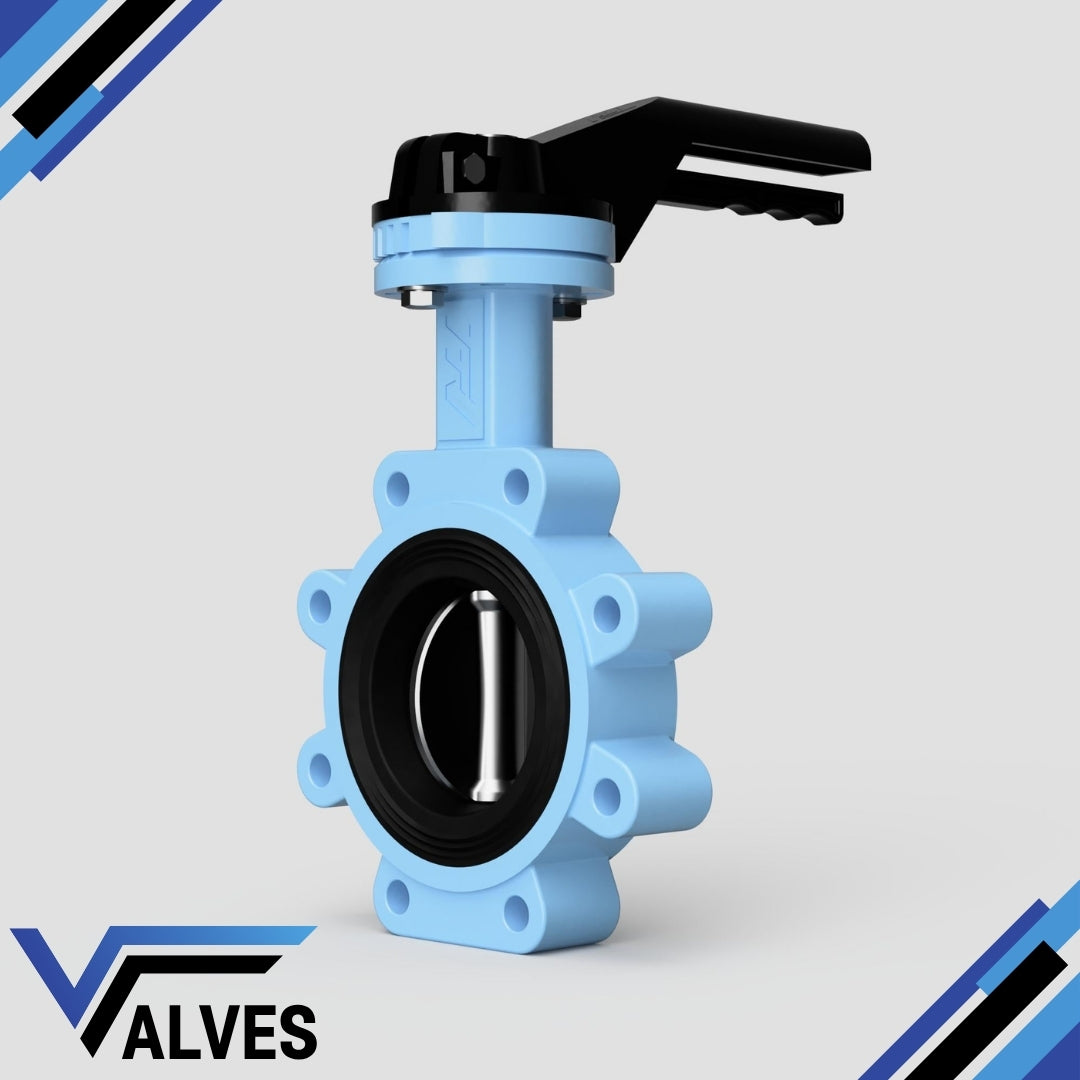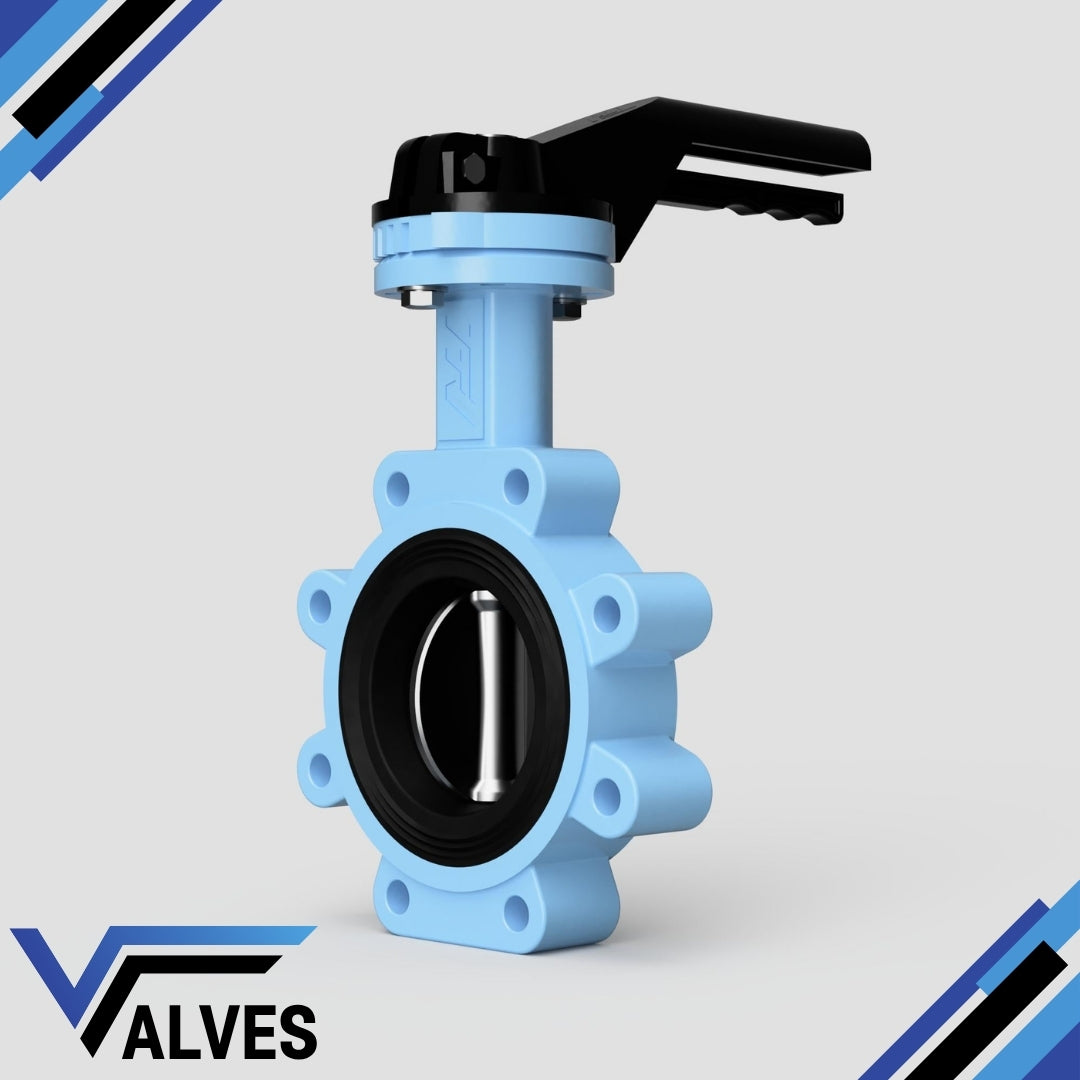Valves UK
TTV Lugged Butterfly Valve - NBR Seat
TTV Lugged Butterfly Valve - NBR Seat
Couldn't load pickup availability
Introducing the Lugged Pattern TTV Butterfly Valve, a reliable and versatile solution designed for demanding industrial applications. This valve is constructed with high-quality materials to ensure durability, performance, and ease of operation.
Pressure Rating: PN16
Body Material: Ductile Iron GJS500-7, known for its exceptional strength and corrosion resistance, making it ideal for various environments.
Seat Material: NBR (Nitrile Butadiene Rubber), providing excellent sealing capabilities, chemical resistance, and durability, ensuring a long service life.
Connection Type: Lugged pattern, allowing for easy installation and maintenance in pipelines where secure attachment is required.
Operation: Equipped with a lockable lever, providing enhanced safety and control, ensuring that the valve position can be securely maintained to prevent unauthorised adjustments.
This TTV Butterfly Valve is perfect for applications requiring a robust and reliable flow control solution. Its superior construction and thoughtful design make it an excellent choice for industries such as water treatment, chemical processing, HVAC, and more. With its PN16 pressure rating, this valve can handle moderate pressure environments, providing dependable performance and longevity.
Share

FAQ's
What is the difference between a valve and an actuator?
What types of actuators are available?
The main types of actuators are:
Pneumatic actuators – use compressed air for fast, reliable operation.
Electric actuators – use electrical power for precise control.
Hydraulic actuators – use fluid pressure for high-torque applications.
Each type offers unique advantages depending on the environment, media, and system control needs.
How do I choose the right actuator for my valve?
To select the correct actuator, consider:
Valve type and torque requirement
Power source available (air, electric, or hydraulic)
Operating environment (temperature, humidity, hazardous area)
Control signal type (on/off or modulating)
Matching actuator torque and compatibility with the valve’s ISO mounting ensures reliable performance.
What are the main types of valves used in automation?
The most common valves in automated systems include:
Ball valves – for tight shutoff and quick operation.
Butterfly valves – for larger flow control with compact design.
Globe valves – for precise throttling and flow regulation.
Check valves – to prevent backflow.
Gate valves – for full bore flow isolation.
What’s the difference between a double-acting and spring-return actuator?
Double-acting actuators use air (or power) to both open and close the valve.
Spring-return actuators use air to open (or close) the valve, and a built-in spring to automatically return it to a safe position when power or air is lost — ideal for fail-safe operation.
How often should valves and actuators be serviced?
Regular maintenance intervals depend on operating conditions, but a good rule of thumb is to inspect every 6–12 months.
This includes checking for leaks, lubrication, seal wear, and actuator responsiveness to prevent unexpected downtime.

